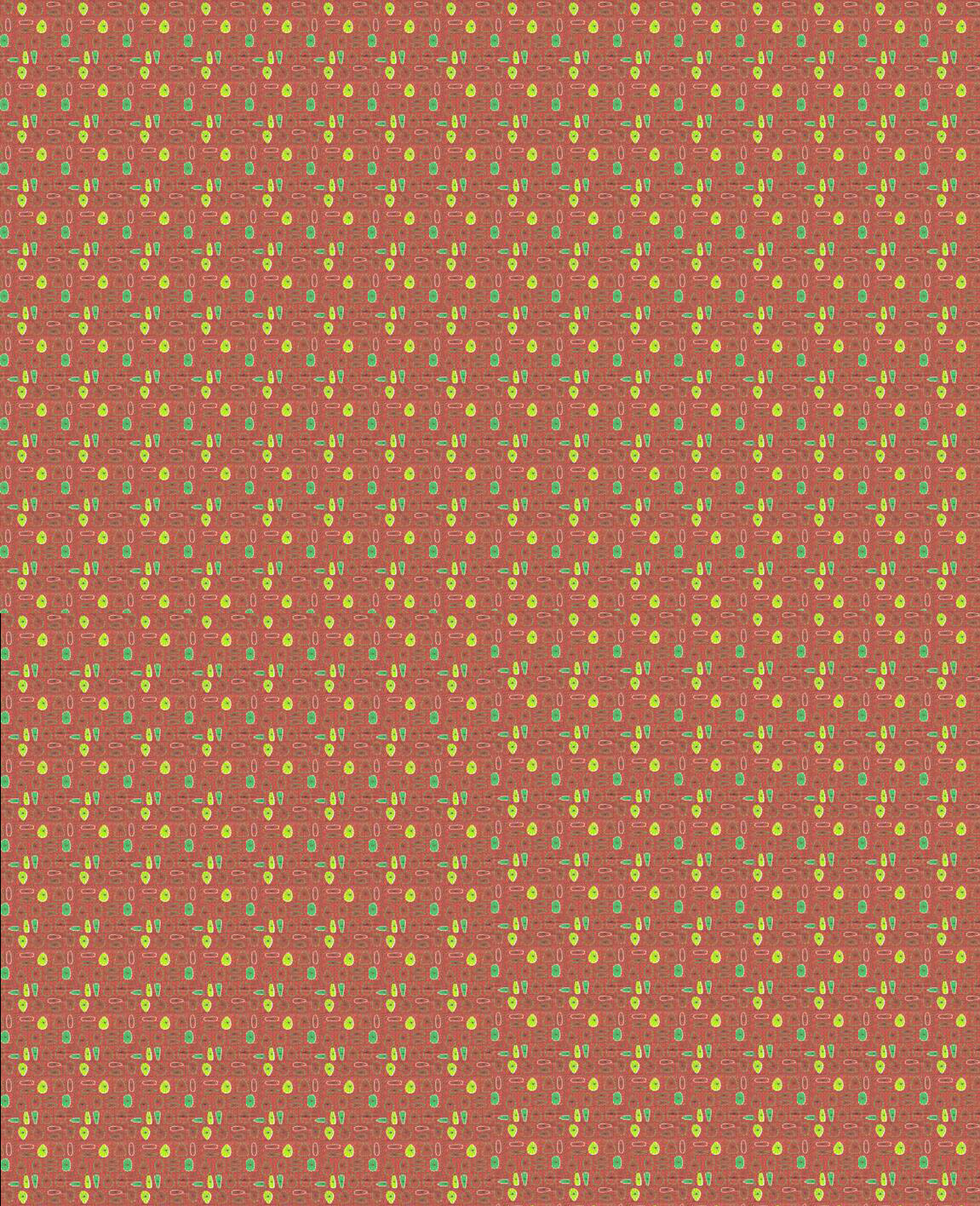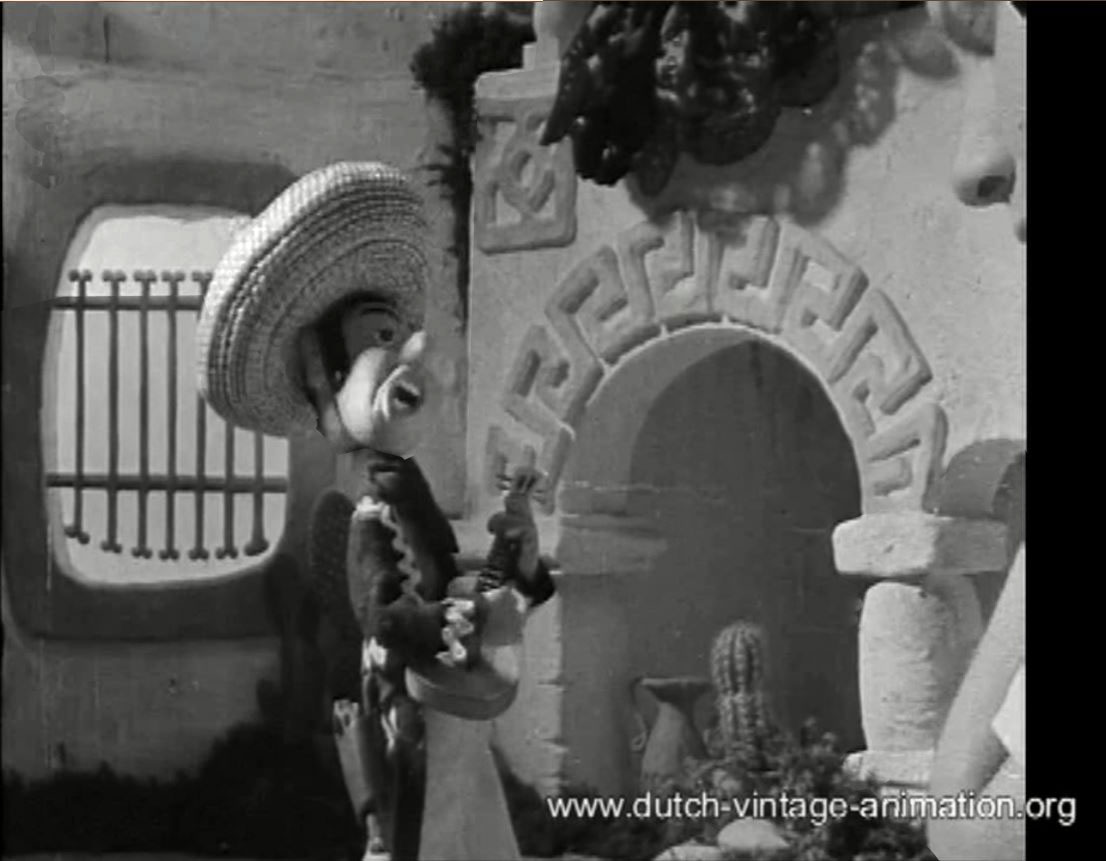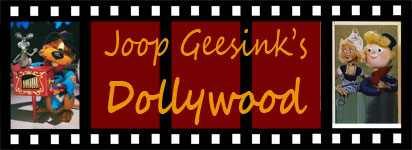
A Milestone
Serenata Nocturna is the first puppet film that Joop Geesink was actively involved in. The opening credit says "A puppet film by Joop Geesink and Marten Toonder", who in 1942 had only focused on cartoon animation; so from that perspective it's a historic milestone.
One Dopey Scheffer is thought to have been hired around 1940 by the "Geesink-Toonder Cartoon Studio". Story goes that his keen interest in puppet animation would have been the impetus to produce this film using puppets.

In the early days of the commercial film, a filmmaker would first develop the concept and then try to sell it to a client. Joop Geesink knows that a few years ago Philips had a number of high-end puppet film commercials produced by George Pál. With Pál now in the USA, Toonder-Geesink use this as an opportunity to produce a brief one-scene animation test to convince Philips' top executive Sies Numan of their potential. He likes it, despite the somewhat coarse animation, and hands them the assignment.
George Pál
Seranata Nocture is in black and white, whereas the earlier film by George Pál were in glorious Technicolor. Because of war shortages, colour film was hardly available or affordable. Noteworthy is the fact that the character design is less stylized and more realistic, compared to Pál's puppets. For this film, a series of hand-molded replacement heads were used. However this technique to instil a puppet with believable human expressions was still in its infancy. It would be perfected when Harry Tolsma joined the studio.
Meer realisme
Also new is the use of flexible limbs. George Pál preferred to use rigid replacement arms and legs, which was a labour-intensive process do and restricted the animators. Joop Geesink encouraged George Pál's former associates to create a stop-motion puppet that was fully flexible. This film can be considered as an introduction this entirely new type of puppet.
Below is a picture of an error that was left in the original negative, showing the camera assistant holding the scene marker. This frame was accidentally left in the final negative. Little mistakes like these would be rare in later Geesink films.
Trivia
Several close-ups occasionally show some visual "noise" on the right hand side of the frame, it looks ragged. Going through it frame-by-frame reveals it's the animator who is partially in the frame. Mousing over the image below will indicate the animator's face sleeve and arm. The reason that this happened was that cameras from that era did not have viewfinders that would let you see through the lens, showing you accurately what's in the frame. The animator occasionally misjudged the camera angle and would accidentally include himself in the frame. This is called the Parallax Effect, something animators would be quite aware of in later films, clearly marking the camera angle and staying well outside of it before exposing another frame.

Example of a frame with several errors.
Above: enlargement showing the sculpted face with noticeable differences in colour and shape, and revealing a needle on the back of the head.
Right: De camera-assistent with clapperboard
Blooper
This first frame of the scene shows the scene marker for one single frame, and not all the set lights are on yet.

Credits "Seranata Noctura"
| Title | Seranata Noctura | |
|---|---|---|
| Client: | Philips Electronics | |
| Duration: | 3 minutes | |
| Production Year: | 1942 | |
| Script: | Joop Geesink & Marten Toonder | |
| Art director: | Unknown, probably Jan Coolen | |
| Animatie: | Unknown. Probably József Misik | |
| Puppets: | Dopey Scheffer | |
| Puppetclothing: | Phiny Dick (Marten Toonder's wife) | |
| Sets: | Hagemeijer & Loek van Delden | |
| Others: | Jan Duyfvetter, John van der Meulen, Bertus Outmayer, Wim Gomes | |
| Format: | 35 mm, Black and White |



